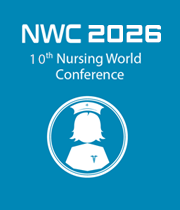Title : Cardiac arrest management in grey’s anatomy – is it compliant with advances cardiac life support guidelines?
Abstract:
Introduction: Medical TV drama series have increased in popularity over the past 10-15 years with in excess of 20 million viewers for each episode of Grey’s Anatomy. Evidence suggests that viewers overestimate the survival chances of resuscitation in cardiac arrest. This effect increases with increasing amount of these medical dramas watched. Advanced Cardiac Life Support training has contributed to the increased survival from cardiac arrest. (42.7% in 2000 to 54% in 2009).
Aims: The primary aim of this study was to determine if cardiac arrest management in Grey’s anatomy is compliant with Advanced Cardiac Life Support Guidelines. The secondary aim was to determine if outcomes of in-hospital cardiac arrest in Grey’s Anatomy were consistent with published outcomes.
Results: This is the most comprehensive analysis of Grey’s anatomy available. All 246 episodes of Grey’s Anatomy in seasons 1-11 inclusive were watched separately by two of the authors and the findings were checked by the third author. Cardiac arrest was observed in 111 (45.1%) episodes. Of these 43.2% were traumatic, 42.3% cardiac, other 8.1% and was not stated in 6.3% of cardiac arrests. In excess of 60% of all cardiac arrests demonstrated significant deviation from ACLS guidelines. The initial cardiac arrest rhythm was correct in 10.9%, incorrect in 4.1% and could either was not visible or not stated by the television characters in 85% of patients. Overall survival was 42.3%. 30.6% of patients died while outcome was not stated in 27% of cases. 52 (46.8%) of cardiac arrest patients were defibrillated. Of these 20 (38.5%) were appropriate, 13 (25%), inappropriate and 22 (42.3%) insufficient information was available to determine appropriateness of defibrillation.
Conclusion: Medical TV dramas demonstrate significant deviation from ACLS guidelines. Despite this survival rates are consistent with real life figures. No data regarding survival to discharge was available.



